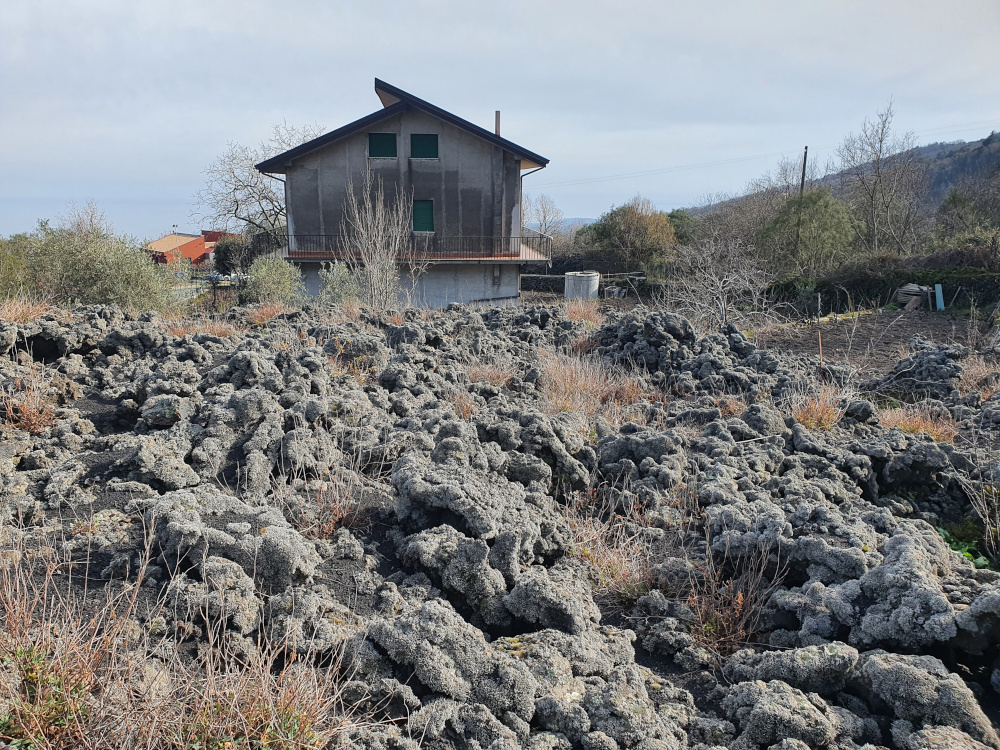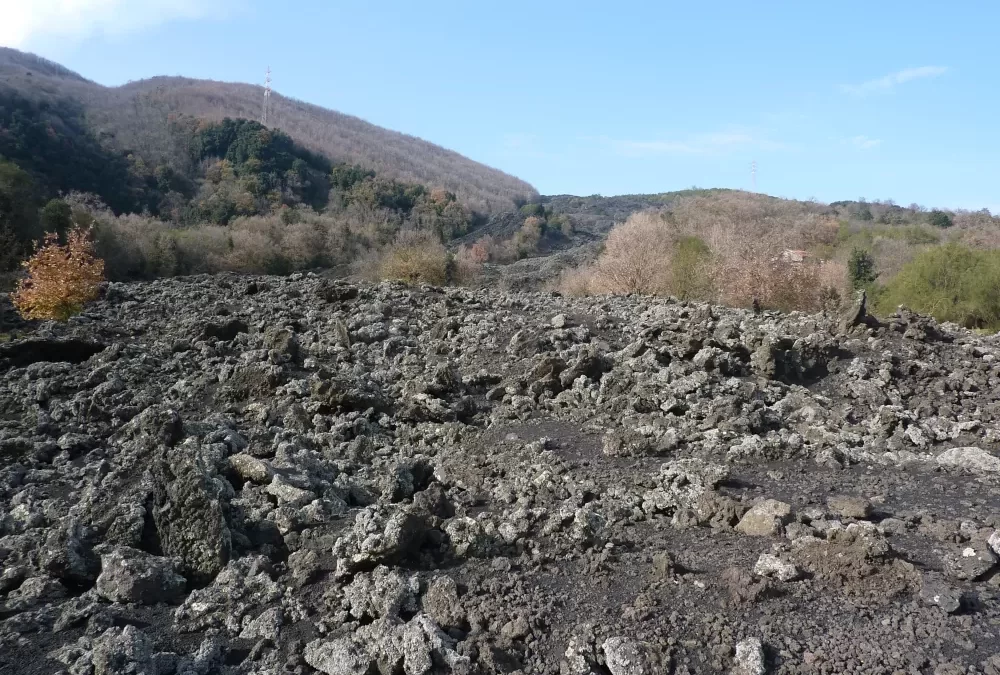The eruption that kept Zafferana in suspense!
This time we report in more detail on the eruption between 1991 and 1993, which scared the inhabitants of Zafferana Etnea – a small town on the eastern side of the volcano.
The beginning of the eruption
On December 14, 1991, fractures opened both to the north and to the south of the Southeast Crater. This was the beginning of the longest eruption of the 20th century, which ended only after 473 days on March 30, 1993. Fractures formed from an altitude of 3100 to 2700 metres above sea level, between 150 and 650 metres long, and lava fountains 300 metres high rose up.
The following day, a very fast flow started between 2400 and 2200 metres above sea level, covering 2 kilometres in 24 hours. On 23 December, it managed to overleap the Salto della Giumenta and poured into the Val Calanna, where it destroyed orchards and hazelnut groves with a front 400 to 600 m wide.
At the beginning of January 1992, an embankment was built on the easternmost part of the Val Calanna in an attempt to prevent the lava from flowing out of the valley, because if it overflowed from that point it would encounter a very steep ridge that would quickly bring it to the town of Zafferana Etnea.
On 3 January, the lava flow in question came to a standstill, although two other flows joined and overlapped the previous one at an altitude of 1,650 metres. It was nevertheless contained by the barrier built by the civil protection and the army and continued towards the uninhabited valley Valle del Bove, thus not causing any concern.
The lava reaches Zafferana
At the end of January, other fractures opened to the north of Monte Zoccolaro, and the tongues produced poured into the Calanna Valley and by the end of March had already filled it. On 8 April, the flow managed to overcome the artificial embankment that had been built and poured over Piano Dell’acqua, spreading fear of imminent destruction among the inhabitants of Zafferana. Although new walls were built, the dams gradually filled up, the lava flow did not stop and on 14 April, it hit and destroyed the first house.
The picture shows the lava flow of 1993 that stopped shortly before the 2nd house, which is still standing today.

After two days, the flow seemed to slow down, but a new fracture opened right at the top of the Val Calanna, so it became essential to do even more to avoid the worst. It was necessary to use explosives to break the banks and make the fiery tongue change direction. The aim was to make it pour into the Valle del Bove. Luckily, the operation was successful and had the desired effect. By dividing the lava into various tongues, the threatening front fortunately slows down its advance.
But as it moves slowly, the surface of the flows has time to harden and create a crust, a sort of vault over the river of lava, the “tube” or tunnel that is formed allows the lava inside to maintain and almost not lose energy, heat, fluidity – and therefore destructive power – for miles. So, on 21 April, it became necessary once again to use explosives to create a breach in the walls of the lava tunnel heading towards the towns, and to try to obstruct the conduit with cement blocks. All this hard work was successful, and for some 20 days the buildings below were spared further danger.
Saved at last
Suddenly, on 10 May, the lava flowed eastwards again, out of the Bove Valley, forcing the evacuation of two villages. Excavation work resumed for another 10 days to create a further diversion of the lava flows. On 27 May, the explosive charges were detonated to allow the flow to continue along the new route.
Zafferana was thus saved, the flow redistributed in the various tongues, the lava front slowed down.
On 29 May 1992, the vault of the main tunnel actually collapsed, so that the lava began to flow out definitively and overlapped the solidified tongues, thus preventing further overflows from the valley.
The activity continued for another 10 months, until 30 March 1993, the last day of activity, but fortunately without creating any risks for the population of the foothills.
If you come to Zafferana Etna, you can see northwest of the town even today where the lava flow stopped in front of the 2nd house (view on Google Maps).
